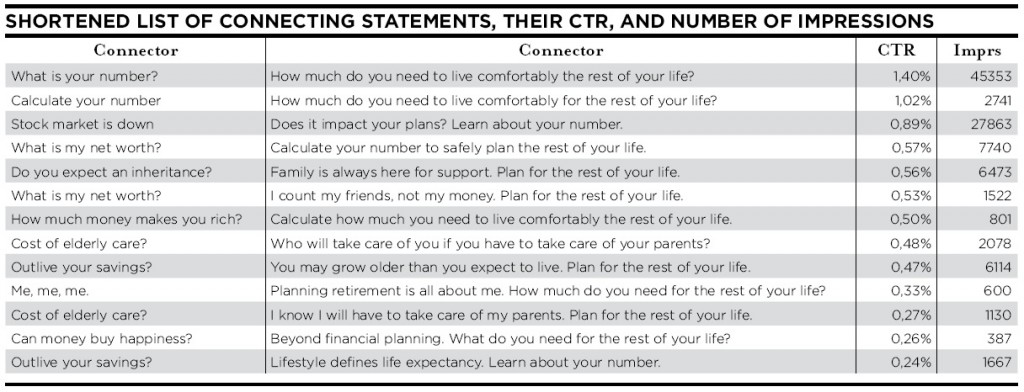Dirk Lorré and Benoit Gaillard
The biggest threat to the validity of an answer is the question. Avoiding or reducing the number of questions is a good way to enhance the validity of consumer research.
This technique is perfectly in line with the fundamentals of qualitative interview techniques: Don’t ask leading questions.
What are leading questions?
Let’s start with the 5W questions: Who, What, Where, When and Why. Although an efficient method to structure research data, these are not the most appropriate questions to ask directly to consumers. Especially the “Why” question – it is an open invitation to consumers to lie. Typically, human beings are not the best at consciously explaining their own behaviour. When you ask “Why?” you ask people to justify their own behaviour. Most respondents are prone then to give you the most socially acceptable answer.This is the rationale behind qualitative interviewing 101: Never ask why.
The Why question leads people towards social desirability. When you combine it with that other popular research question: “Do you like it?” it further encourages a “please lie to me” type of answer. Think about it, consumers are not stupid. If you ask the question, “Do you like it?” they know the next question will be “Why?”. Examine the psychological mechanism at play here: first you ask someone to position him/herself (Do you like it?) and then to justify that position (Why?) Because people tend to like what they know and what is already accepted in society, they find it easy to justify and explain it. And the result of this way of questioning for our industry is dramatic: we kill beautiful ideas before they are born. “Do you like it? Why?”– The brutal and effective innovation killer!
So how can you avoid a situation like this? In our research we use another type of questioning methodology that focuses on relevance rather than preference. We engage in and apply a different type of stimuli: The Connecting Statements.
Working with Relevance
Instead of asking questions like “Do you like it?” and “Why?”, we run group discussions using questions such as “is this interesting?” We are asking for relevance. There are many variants you can use to probe interest: “is this about you?” “Would you like to know more about it?”, and so on. What level of differentiation does this offer from the “Do you like it” question?
Try this experiment with your friends. Ask some of them “Do you like China?” and ask the others “Do you find China interesting?”. If you want to have the full list of stereotypes (negative or positive) about China just start with “Do you like China?” On the other hand, if you want to see how China triggers a mixture of curiosity and fearwith a lot of people, try the interest question.
A group discussion run on relevance tends to have different social dynamics. People are less tempted to judge, and instead seek to explore more. What is important is not the “yes” or “no” of the answer, but the body language and the ease with which they can comment on the stimulus and relate it to their own life.
The beauty of the internet is that you do not need to ask “Are you interested?” A simple click is the consumer behaviour expressing initial interest. This feature of the Internetcan be used to research and select connecting statements; we will explain this in more detail later.
Working with Connecting Statements
In addition to a leading question the way we present the object of our research can be leading as well. Let’s take an example of financial planning. We may ask the question, “Do you undertake financial planning?” The fact that we isolated and“decontextualised” the object, i.e.“financial planning”, makes the question even more leading. Various respondents will have different conceptions of “financial planning” and the answers will reflect this diversity of views. But most of them will think, “Financial planning” sounds like something serious; I better answer: “Yes, I do indulge in it”. The problem here is that “financial planning” is a concept in the mindof a banker, not necessarily common in the mind of the client. To research it, we have to find out how financial planning is conceptualized in a consumer’s mind. A concept exists in the mind of the beholder. In our questioning, we lead consumers to our own concept of the world around us and are blinded by our own interpretation.
To get over this, we need a 2-way communication process that will help create mutual understanding. So we need to talk to the banker first.
We will ask the banker not to explain how he sees financial planning but how he thinks he can interest his customer. This may seem like a difficult exercise, but it can be very beneficial for the banker. If he thinks there is a need for financial planning, if he has customer insights, it should be possible to trigger that insight by stating a simple sentence conveying an idea. This is a connecting statement: the most simple sentence that triggers the interest for what you are selling in the mind of the consumer. This is the concept pick up line!
So we invite the banker, our client, for a brainstorm about:
“How do you make someone consider a financial planning service?”
- Maybe we have to refer to the stock market going down (and your savings evaporating)
- Maybe we have to dwell on the idea of outliving your savings
- Maybe we have to consider the cost of retirement
- Maybe we have to refer to the number, the sum of assets, people think they need to feel secure in the future
- May be….
Using Connecting Statements in Google Ads
The result of this brainstorm is a set of connecting statements we present to our target customers in a group discussion with the simple question: “Is this interesting to you?”
This is a proven way to avoid asking leading questions-weprovide all types of possible answers and we check which one connects best with our target audience.
The same way that you use connecting statements in a group discussion, youcan also use them effectively in Google ads. To determine who will see the ads, we select a set of keywords related to our field of research: financial planning, retirement, saving money, investing, etc.
In this case the connecting statement about the number seems to get maximuminterest from surfers. In the case of connecting statements as Google ads, we get answers without having to ask questions.The click through rate (CTR) is a very valid vote with afinger clicking the ad.
Whether it is a group discussion or ads on the Internet, the principle is the same: create many possible answers in order to avoid asking leading questions. The difference is that we can switch from the laboratory setup (the group discussion) to an in vivo, in system type of experiment online.
Making Connections that Go Beyond Mere Concepts to Create Meaningful Dialog
But finding connections with customers is not an end in itself. With the information about the interest generated by the different connecting statements we go back to the client- to rethink, to hypothesize, to make the connecting statements more relevant, and to create full concepts based on them.
At the end of this iterative process there is a lot of insightcreated; not on paper, but in the mindof the client. We can use these insights to create full connecting concepts. What we aim to do is to help clients understand their customer, and help consumers to better understand the concepts that they are being offered.
In everyday life situations, we call this a dialog: the best way to get answers without questions. And creating a dialog between marketer and consumer is what marketing research is all about. That is when communication becomes effective, useful and generates results.
Dirk Lorre is the owner of Brandstrategists.net in Belgium and Benoit Gaillard is the owner of WSI Business Performance in Switzerland. Both will be speaking at ESOMAR’s Qualitative Conference this November.



